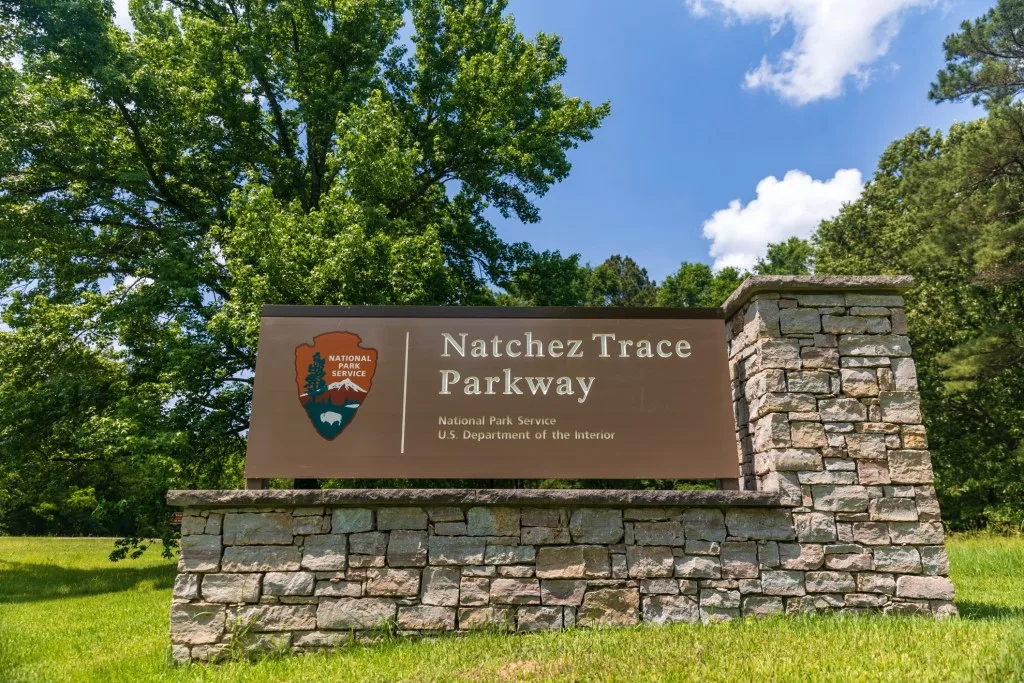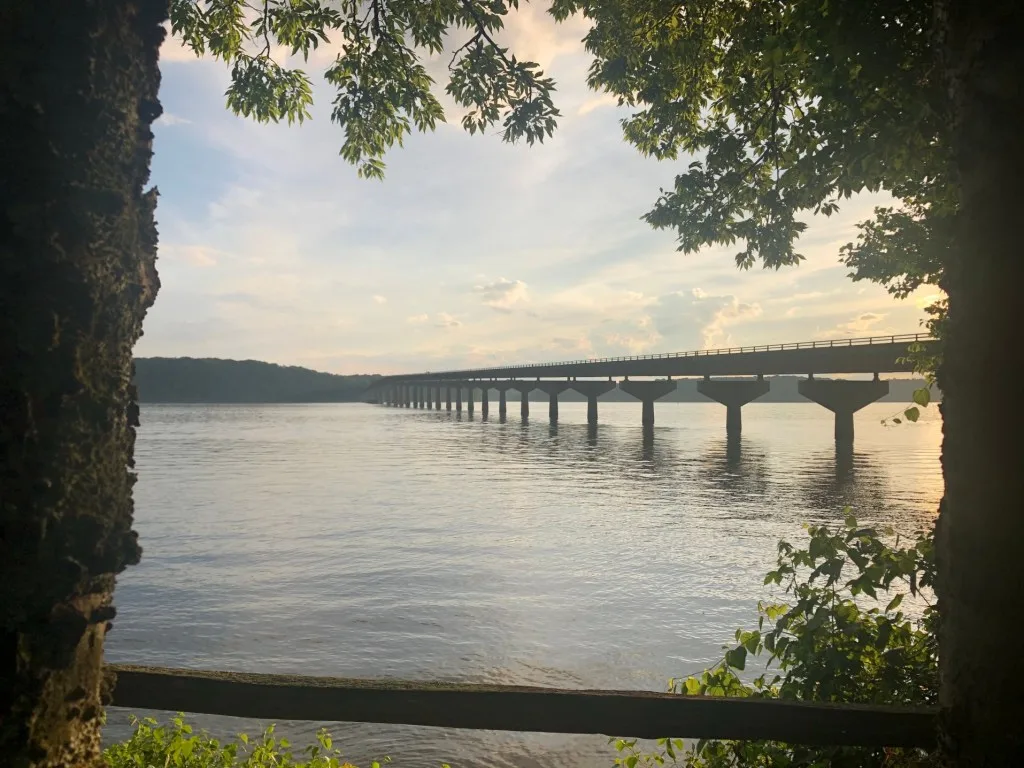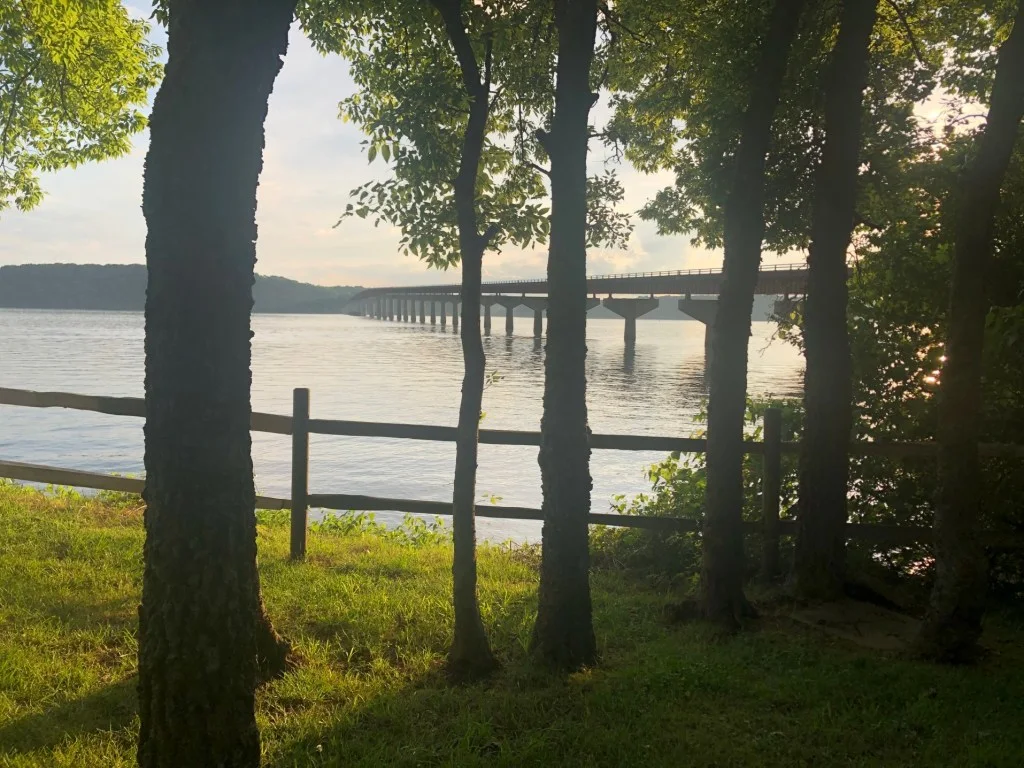Long before the Louisiana Purchase almost doubled the size of the US, people used the original “southwest” path for hundreds of years. The Natchez Trace is a footpath that became a trail for commerce, hunting, and travel. Native Americans and European immigrants used the trail often.
One of America’s most successful explorers, Meriwether Lewis, died mysteriously along the Trace. T
oday, travelers can follow this historical path on a 444-mile parkway. They can enjoy a peaceful drive offering beautiful scenery and more than 100 historical sights. But is driving the Trace worth it? Let’s find out!
Where is the Natchez Trace Parkway Located?
Starting from Natchez, Mississippi, to outside Nashville, Tennessee, the Natchez Trace Parkway follows the original Natchez Trace Trail that Native Americans used for hundreds of years. The first footpath traced bison trails, covering hilltops and avoiding the valleys. It soon became a commercial path between larger encampments.
Today’s parkway follows the Trace, with many parts of the original trail still in existence.
How Long Does It Take to Drive the Natchez Trace?
Since the parkway is 444 miles long, if visitors drove the entire park without perusing historical sites or hiking to many of the natural landmarks along the way, they could drive it in a day. However, there are three campgrounds at good resting spots on the Natchez Trace, enticing drivers to stop and rest.
With Native American ceremonial mounds, historic sites, waterfalls, equestrian trails, hiking, biking paths, a swamp, and many other sights, there is no reason to hurry. To enforce a slower pace, the speed limit on the Natchez Trace Parkway is 50 mph.
Pro Tip: Spend the night at this Free Camping Spot in Natchez, Mississippi.

5 Reasons Why You Should Avoid the Natchez Trace
Even though it seems like a lovely destination for travelers, there are a few reasons that traveling the Natchez Trace may not appeal to everyone. Five of our top reasons are below:
There Are Too Many Scenic Spots to Choose From
You may want to avoid the Natchez Trace Parkway if you don’t like making decisions. There are so many beguiling stopovers that you’ll be hard-pressed to decide which ones to see. With waterfalls, historic tobacco barns, burial grounds, cypress swamps, Native American villages, and hiking along underwater sections of the Trace, many destinations are waiting to steal your attention. We would want to stop at all of them!
Heavy Traffic In Some Areas
The Natchez Trace is becoming more popular. This is likely due to the preservation of its rich history. People may also be looking for a slower pace through scenic areas. You may not want to deal with other drivers cruising through this park-like setting.

You May Be Overwhelmed With The Rich History
If seeing too many historical dates or learning about who made history will throw you off your game, don’t bother driving the Natchez Trace. There are too many historic landmarks along its paths.
You can explore Native American mounds and villages, walking in the footprints of traders, trappers, and pioneers. If the history might be too much for you to handle, you’d best stay home.
The Road Closes During Severe Weather
In winter, drivers may deal with unexpected snow and ice. Therefore, officials may close the Trace until weather more conducive to travel returns.
So if you hope to try out your new four-wheel-drive on slippery roads, you will be sorely disappointed on the Natchez Trace Parkway.
It’s Not Advised to Travel At Night
This rural drive has nothing to take your attention away from its quiet beauty and collection of historic destinations, so street lights are not a top priority.
The road winds through forests and hilltops. Even though the average speed limit is 50 mph, there may be safety issues if you travel at night. The National Park Service would prefer you stop at one of the three campgrounds they provide, spend the night, and resume driving during the day.

When Is the Best Time to Visit the Natchez Trace?
Most visitors to the Natchez Trace come in the spring and fall seasons. The summer can be humid and sweltering, and many travelers avoid the Trace in warmer months. The spring and autumn colors in nature are a significant attraction for weekend visitors to the Trace.
Pro Tip: When traveling along the Natchez Trace make sure to Leave No Trace!
Is The Natchez Trace Worth Visiting?
Only put the Natchez Trace Trail on your list if you love to do a little meandering through historical landscapes and enjoy traveling through nature. It’s best for those who like to hike to waterfalls or dangle their feet in a spring.
You may not want to visit historic inns and homes, look for Native American artifacts, or try to solve Meriwether Lewis’s mysterious demise at Grinder’s Stand. If none of those options interest you, perhaps you shouldn’t come to the Trace!
Will you avoid the Trace on your next adventure or will you give it a chance? Tell us in the comments!
Discover the Best Free Camping Across the USA
To be honest with you, we hate paying for camping. There are so many free campsites in America (with complete privacy).
You should give it a try!
As a matter of fact, these free campsites are yours. Every time you pay federal taxes, you’re contributing to these lands.
Become a FREE CAMPING INSIDER and join the 100,000 campers that love to score the best site!
We’ll send you the 50 Best Free Campsites in the USA (one per state). Access the list by submitting your email below: